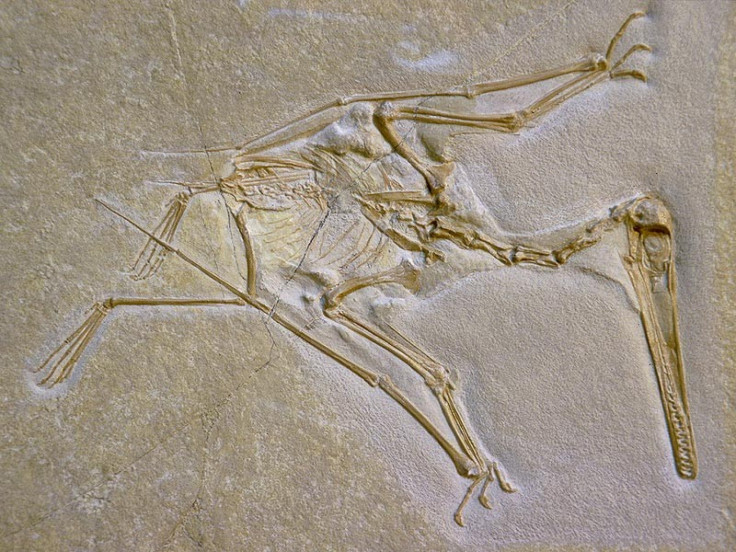Famous First Bird ?Archaeopteryx? May Have Been a Dinosaur After All

Archaeopteryx, the legendary winged creature which was long considered the Earth's oldest and most primitive bird, might not have been a bird at all, according to Chinese scientists.
Archaeopteryx's fossils are about 150 million years old and were discovered in 1861 in Germany about two years after the publication of Darwin's Origin of Species. The spectacular find provided visual glimpse of evolution.
The fossil found had the feathered wings of a bird but teeth and tail of a dinosaur, and throughout the years, theories about the evolution of the bird species heavily relied on Archaeopteryx. But the discovery of several feathered dinosaurs in the past 15 years has led experts to question whether it was really the first bird.
A recent provocative study from Xing Xu of Linyi University challenges the classification of archaeopteryx as a bird and threatens to overturn everything that's based on that assumption. Xu and his team claim that archaeopteryx may not be a bird at all. Instead, it might just be a flying and feathered reptile that didn't rise like modern bird.
If this controversial claim is confirmed, the Archaeopteryx can no longer perch at the top and hold the honor of being called the oldest known fossil of the bird species.
The team says a new Archaeopteryx-like fossil Xiaotingia zhengi, which dates back 155 million years to the Jurassic Period, from the Tiaojishan Formation in eastern China shares several features with Archaeopteryx, including long, sturdy forelimbs that presumably allowed it to fly.
Xu and his team reconstructed a family tree and compared the newly discovered fossil with other similar dinosaurs and early birds, and now believe Archaeopteryx and Xiaotingia are feathery dinosaurs, and should no longer be considered as birds.
"There are many, many features that suggest that Xiaotingia and Archaeopteryx are a type of dinosaur called Deinonychosaurs rather than birds. For example, both have a large hole in front of the eye; this big hole is only seen in these species and is not present in any other birds,” according to Dr. Xing Xu, reported BBC.
Dr. Xing Xu also listed comparisons to the Deinonychosaurs' specialized hind foot claw, which could extend thanks to a sheath in its bone. The Archaeopteryx displays developmental features in this area. Also based on the fossils, the Archaeopteryx adorned feathers around its forelimbs and hind limbs with longer feathers growing from the thighs. The feathers and properties of its forearms suggest it flew to hunt for food.
If the findings are true, the Archaeopteryx would join another feathered dinosaur that was recently discovered, called Anchiornis, also unearthed by Dr. Xing Xu and his team. The creature is reported to be the oldest feather bearing animal, older than the Archaeopteryx by 11 million years. Feathers cover the creatures body with special forelimb feathers coming from the wrist. The Anchiornis also carry aerodynamic features from the overlapping feather patterns.
“The overall picture of birds being descended from meat-eating dinosaurs is now very firmly established,” said Paul Barrett, a dinosaur researcher at the Natural History Museum in London, The Guardian reported.
“This is an argument over a relatively small rearrangement of some of the twigs on the evolutionary tree close to the origin of birds. It doesn't affect much of our big picture view of how birds came from dinosaurs, but some of the minutiae: the small changes that are important to the biology of the animals,” he added.
To be sure, the assertion of Xu's study doesn't challenge the scientific community's assumption that birds evolved from dinosaurs. However, they may have to look elsewhere to bestow the title of the oldest known bird fossil. Moreover, the theory of evolution may have lost one of its early icons.
Revisions of evolutionary trees constructed by scientists are not that rare as the discovery of new fossils or new analysis frequently challenge old assumptions.
The Archaeopteryx may have currently stood as the godfather of birds but the dethroning may offer opportunities for other species such as the Sapeornis and Epidexipteryx to shed light as the oldest bird in the family tree.
© Copyright IBTimes 2025. All rights reserved.





















